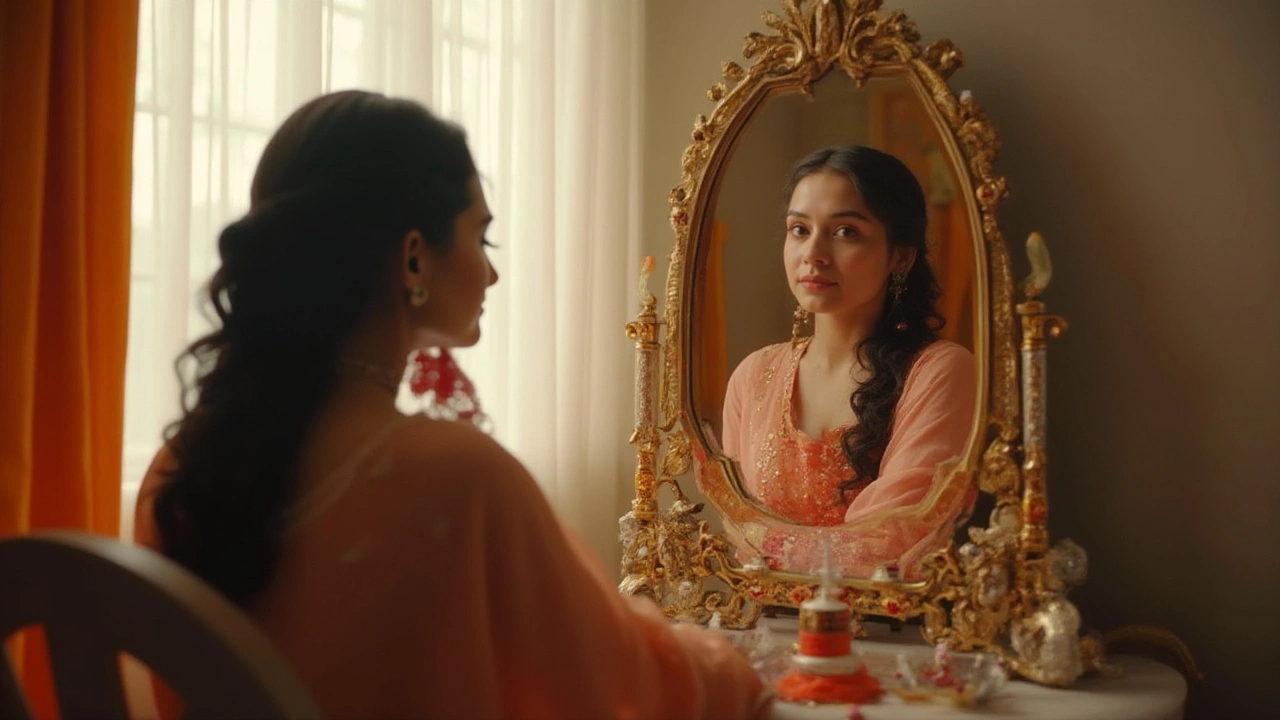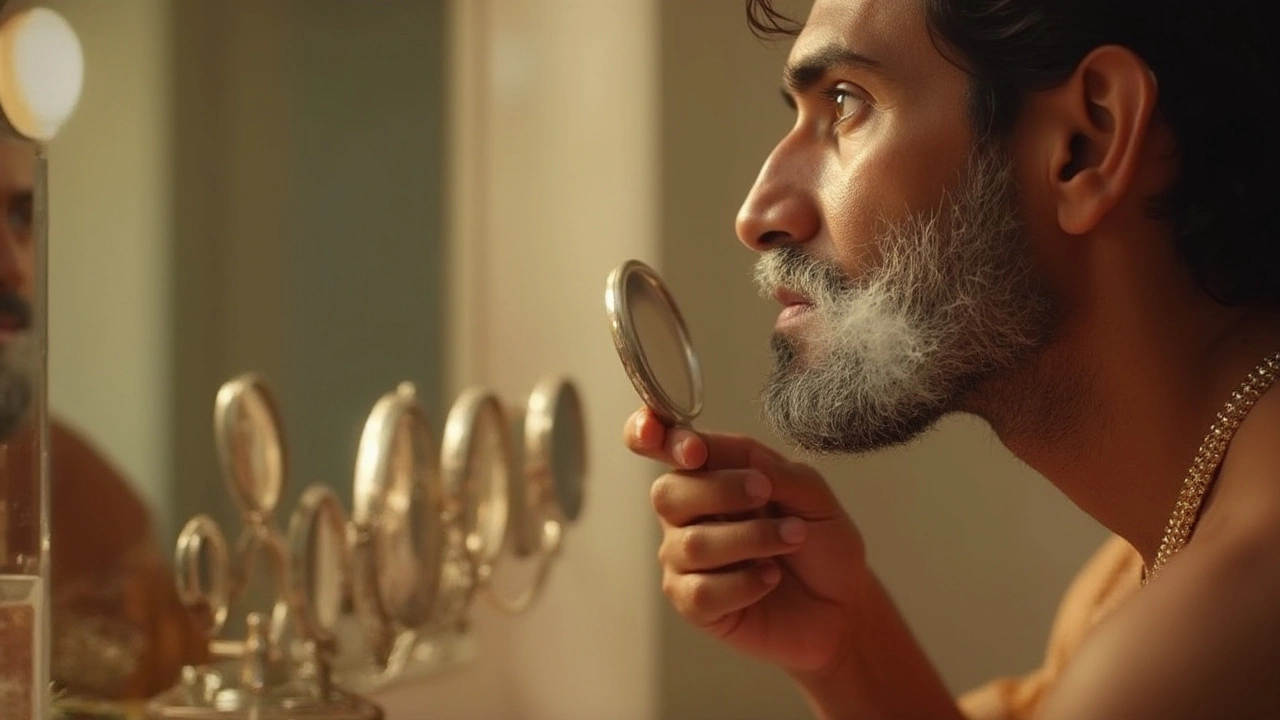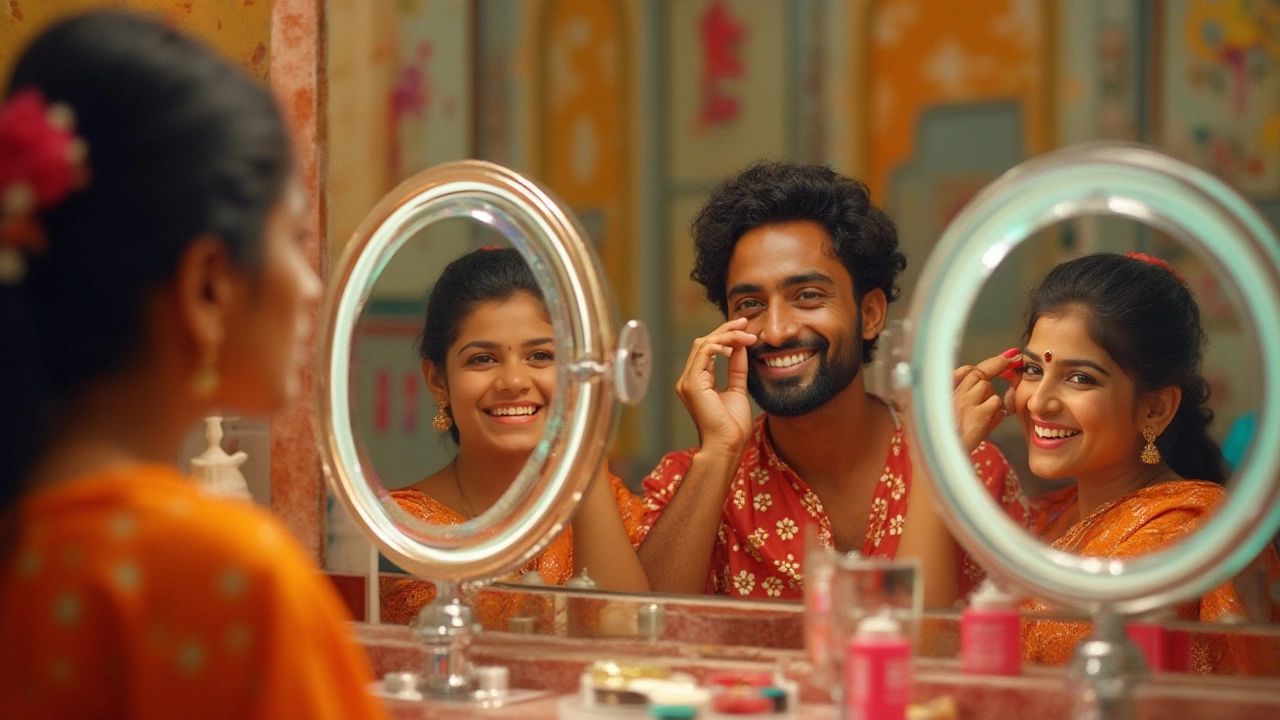Best Magnification for Makeup and Shaving Mirrors: Expert Guide

Ditch everything you think you know about mirrors—there's a whole world behind that shiny glass. Ever tried to pluck a stray eyebrow hair only to poke yourself instead? Or maybe you've squinted so hard to see a blackhead that your nose almost pressed a hole through normal glass. The truth is, the right magnification can turn your daily routine from a fuzzy guessing game into a crystal-clear win. But what is the best magnification for a mirror? There's no single answer. The "best" depends on what you actually do in front of that mirror, how close you like to get, your eyesight, and—unlike those social media hacks—what really works in real life. Mirror magnification is one of those things you don’t pay attention to until you get the wrong one and end up feeling like a pirate with an eye patch.
How Mirror Magnification Works and Why It Matters
Let’s talk about what those little numbers on mirrors even mean. If it says 5x, it doesn’t mean your face gets blown up like the Moon on a clear night, but it does mean everything’s five times bigger than life-size. Hotels in Manchester and across the UK often stick with 3x to 5x magnification in bathrooms for a reason: that’s the sweet spot where you can do your makeup, shave, and catch sneaky spots yet still recognize yourself. Any higher—say, 10x—and you might see pores you didn’t know existed, but at that point, unless you’re a watchmaker or enjoy spotting new life forms on your skin, it’s usually overkill.
Mirrors measure magnification by the ratio of the reflected image size to the actual object. So, 2x means things look twice as big, 10x is ten times larger, and so on. Here’s the catch: higher magnification narrows the field of view and requires you to be right up close, usually within 5-10 cm. Step even a bit away, and everything blurs out. That’s great if you need to see fine detail like tweezing, but a disaster if you want to style your hair or check your whole face. Ever wondered why your mate’s "ultra-magnifying" mirror looked like a blurry mess from across the bathroom? Now you know.
Backed by actual user research, 3x to 5x lands in the goldilocks zone for anything routine: shaving, applying eyeliner, or making sure you haven’t left toothpaste on your mouth. If your eyesight isn’t what it used to be, you could go one level higher—7x is popular for folks who wear glasses. But once you cross the 10x line, the mirror is basically useless for anything but surgical-level grooming or seeing things you’d rather not.
There’s another thing at play: lighting. Lighting makes a shocking difference. A high-magnification mirror with poor lighting will exaggerate shadows and make uneven skin look terrifying. That’s why some of the best mirrors for makeup or shaving combine 3x to 7x magnification with built-in LED lights that mimic daylight. In fact, professional make-up artists swear by 5x magnification under natural white light, letting you see every detail without turning every pore into a canyon.

Which Magnification Level Is Best for Each Task?
Different tasks call for different mirror superpowers. Let’s break it down:
- Makeup Application: For most people, a 5x magnification mirror is the gold standard. It’s just enough to see all the details for precise foundation blending, eyeliner, or lipstick. If you regularly wear reading glasses, you might lean toward 7x to get a closer look.
- Eyebrow Tweezing & Facial Hair Removal: This is where 7x shines. It’s close enough to see those stubborn baby hairs without needing to squint or pull a muscle in your neck. Just don’t use 10x unless you absolutely need to—or unless you enjoy the horror genre when looking in the mirror.
- Shaving: For blokes and anyone who prefers smooth skin, 3x to 5x strikes the right balance. Too much magnification and you’ll lose perspective; too little and you’ll be forever missing that one patch under your chin.
- Contact Lenses: 2x to 3x is usually spot-on. You want to see what you’re doing, but not so close that your eyeball’s reflection is bigger than your head.
- Skincare (Inspecting Imperfections): Here, higher magnification does help—7x gets a close-up on blackheads and blemishes. But don’t obsess over every tiny flaw. Dermatologists say it’s better for your mental health to step back and look at your face as a whole. That’s one area where over-magnification can backfire.
- Hair Styling: Standard, non-magnified mirrors or 1x to 3x is best. Anything higher and you’ll lose track of what you’re actually doing.
If you need the Swiss Army Knife version, some mirrors offer a double-sided design: one side standard (1x) and the other 5x or 7x. This is brilliant if you bounce between tasks or do your partner’s eyebrows and then need the whole mirror for trimming your beard.
One myth worth busting: higher magnification is NOT always better. In fact, buyers who grab the strongest magnification often return them, shocked at just how disorienting they are. A study at a top Manchester retailer showed most returns for 10x mirrors come from first-time buyers who simply can’t use them for more than a minute. That should tell you something.
Mirror placement helps too. If your mirror is going to sit on a dressing table, a lower magnification works since you might sit further away. Wall-mounted mirrors, especially those on swing arms, often use 5x or higher because you can get right up close (pro tip: these are lifesavers in small flats where space is tight).

Tips for Picking the Perfect Magnification
So, how do you pick the right mirror magnification without overthinking or wasting money? First, ask yourself what you’re actually using the mirror for most. If you break out tweezers every morning, higher magnification is your friend. If it’s mostly for teeth-checks or a once-over before heading out, stick with 3x or just regular glass.
Try borrowing a friend’s mirror first, or head into a shop and test out the options. Your eyes and your comfort zone matter more than marketing promises. Remember, the perfect magnification for me might not suit you if our eyesight or habits differ. If you wear spectacles, take them off and see how comfortable you feel looking in at 5x or 7x. No two faces are exactly alike, so the best thing is to get your own eyes involved in the test drive.
Mirrors with adjustable lighting get bonus points. You can actually see your skin tone under different conditions (sunlight vs artificial light makes more difference than you’d think). The next thing that matters is build quality: distortion is the real enemy. Cheap magnifying mirrors can warp your reflection, making parts of your face look wonky. Go for good-quality glass—it’s worth the investment.
- If possible, choose a dual-sided mirror (one side normal, one side magnified).
- Consider your usual grooming spot. If your mirror sits in a steamy bathroom, make sure it’s fog-resistant (nothing worse than having to wipe it every two seconds).
- Check the arm length and angle adjustment—you want to be able to pull it close, not crane your head awkwardly.
- LED illumination close to daylight is a game changer, especially on gloomy English mornings.
- Mind the field of view! Higher magnification may only let you see a tiny bit of your face at a time.
Truth is, there’s no one right answer for "the best magnification." But the sweet spot, for most, lies between 3x and 7x depending on your vision and what you’re trying to accomplish. The highest-rated magnification mirror on several UK retailer sites in 2024 was a 5x dual-sided model with LED lights—loved for its clarity, field of view, and flexibility. Trust your own reflection and needs more than social media trends. When you find that perfect mirror, your daily routine genuinely feels smoother. You’ll catch the spinach in your teeth, ace your contouring, and maybe even enjoy the stare-down with your own face every morning.